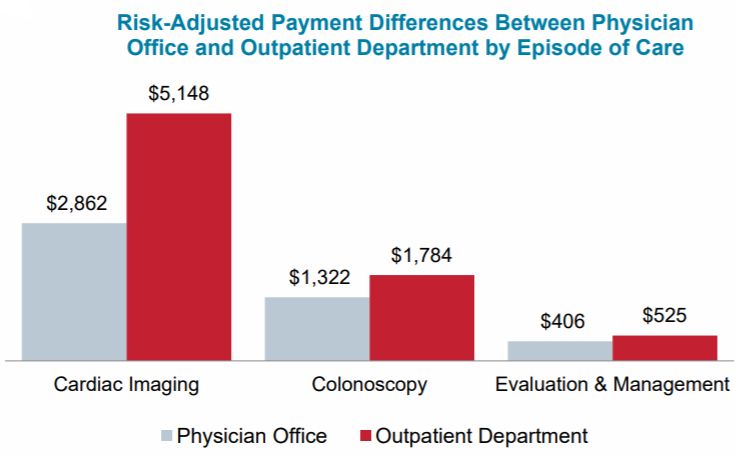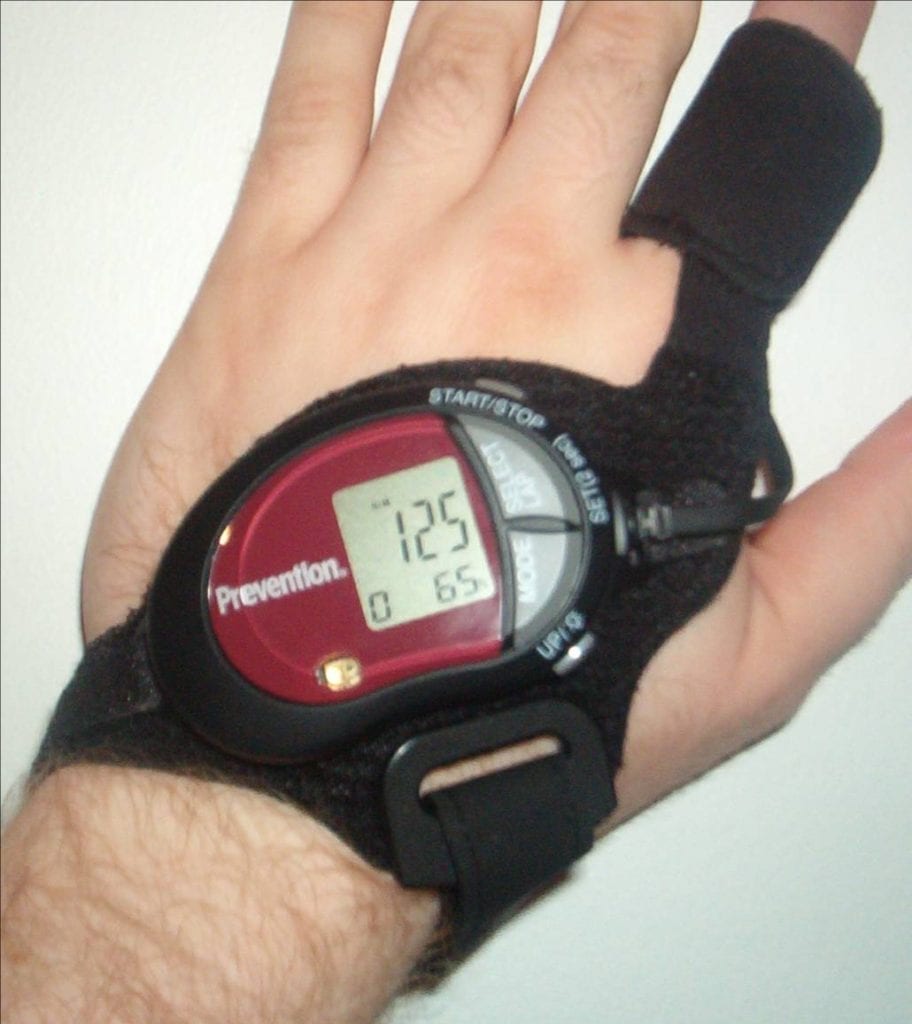Return of the Private Practice
Healthcare is undergoing a revolution.
Whether you are listening to politicians talk about Medicare-for-all, reading about big-tech’s heavy investment in digital health/AI, or following ONC’s pending requirements for data-sharing among health systems and vendors…one thing is certain, “the times they are a changin'”.
The most unexpected of these changes will be the re-emergence of independent care providers. The return of private practice.
What about the consolidation in healthcare?
Impossible you say? True, private practices have become rarer over the last decade as health systems consolidate. The AMA’s Benchmark Survey found, “2016 was the first year in which less than half of practicing physicians (47.1 percent) had an ownership stake in their practice.”
Consolidation will continue to be a priority for most large health systems as each new physician generates millions in annual revenue for hospitals, especially when pushed to see more, do more, and bill more. Health systems that acquire private practices benefit from internal referrals and admissions, increased leverage with payors, and a treasure chest of patient data. Finally, health systems realize that ambulatory care is the future of healthcare, each they more and more patients have access to websites like https://www.sharp.com/services/primary-care/ where they are able to find providers all over their area.
Leaving private practice: a necessary evil
Why have private practices agreed to this consolidation?
It’s no secret: a ton of regulations and the non-patient-care-related activities they have created.
Healthcare’s history of increasing regulations and costs
The size and influence of the modern health system is a natural by-product of a plethora of regulations that have shaped the industry.
Hospitals, originally simple charity care facilities, replaced the direct-to-consumer healthcare model (e.g. house calls) that characterized healthcare before the 20th century due to a number of technological, cultural and economic drivers.
In the 20th century, the government made dozens of bipartisan regulations that restricted provider supply, promoted health system monopolization (Truman’s Hospital Survey and Construction Act and Nixon’s certificate-of-need) and accelerated the demand for care (Medicare and Medicaid).
Costs began to climb.
In the 1970s, faced with a surge in healthcare costs, Nixon’s administration signed legislation that gave rise to the HMO that became characteristic of the 80s and 90s. Originally integrated health systems, HMOs created cliques of healthcare workers that often limited consumer choice but hoped to save money. They offered care providers similar luxuries to employment like a steadier paycheck.
HMOs took up employer-sponsored insurance market share, putting pressure on smaller practices as patients saw the care provider their insurance told them to see. Many private practices were faced with a choice: lose patients to the HMOs or give up some independence and join them.
Patients and providers started complaining. They both wanted freedom of choice back. So the IPA (a HMO made up of mostly private practices) and PPO were formed. They gave patients and providers back some of their choice.
But healthcare costs went up again.
So, over the ensuing decades, policy makers and insurers created even more regulations to try to get them down (DRGs under the Prospective Payment System, Balanced Budgets Act, HiTech Act). But those policies came with a price: more administrative, reimbursement, and technological complexities.
Complexities brought up the costs to operate a private practice. Increasing healthcare expenses in IT, marketing, compliance, and administration favored large organizations. Large health systems have administrative economies of scale. This is why it’s better to have experts like a medical collaborator to help with the complex process.
Providers began to hate their computers, feel unempowered and leave private practice to join health systems. Consolidation became a necessary evil. Less private practices fueled the monopolization of healthcare started by the government.
And so healthcare costs went up yet again.
But that’s not the end of the story. There is a new hope.
The return of the private practice
Something unexpected has happened in the last few years, as Marni Jameson Carey from the Association of Independent Doctors illustrates. The trend toward full-time-employment of providers by health systems has slowed since 2014. There are three general macro trends that are fostering a consolidation counter culture.
1. Employed provider burnout and the great escape
Providers employed by large, corporate health systems are banding together and forming or joining private practices. The reason: more ownership over care. More freedom.
What many have to endure is cruel: steep costs for schooling, studying alone for thousands of hours, and often grueling residencies where they are treated like fraternity pledges. Then, depending on the health system that employs them, they could spend more time charting and placing electronic orders than seeing patients.
People do not afford care providers the empathy that is commensurate with what they deal with. Providers interact with people during their most emotionally vulnerable times. They regularly face dire mental traumas. They are blamed for things outside of their control. And people incorrectly believe that providers’ lifetime earnings are much higher than they are. While the public often assumes that providers are fine because they are experts in health and have “good jobs”, the data tells a different story.
Health system employed provider happiness is at an all-time low. Burnout is at an all-time high. In 2016 the Physicians Foundation showed about 50 percent of physicians are having symptoms of burnout on a daily basis. Their suicide rate is the highest of any profession. Every day in the United States, one physician commits suicide.
There is hope.
Private practice providers report higher levels of job satisfaction. In fact, 73 percent of them would prefer to stay independent if they could. There is a larger, unstoppable demographic shift happening in the United States toward self-employment and small, private teams (e.g. startups). Freshbooks, a cloud accounting software company, found that the number of self-employed Americans could triple to 42 million by the end of 2020.
Since administrative hurdles are hard to overcome, some clinicians join or form large private practices to pool resources and get more autonomy. Others hope for the day when they can provide care on their own terms.
When clinicians see a shot at freedom, you can bet they’ll take it.
2. Consumerization and lower costs with private practice
When you are hungry you buy the best, quickest, cheapest sandwich nearby. Bonus points if the waiter remembers your order from last time.
When you are sick, you find the best, quickest care provider nearby. Bonus points if they know your kid’s name and smile when they walk in.
This is consumerization. A buzzword that means that people use their smartphones to find and buy what (they think) makes them happiest when they can. When choosing between service A and service B, the consumer chooses whatever offers the greater weighted average of efficiency, efficacy, economy, and empathy.
Historically healthcare has been largely void of one key component of consumerism: cost. Cost has not a primary influencer of choice for many patients because 1) they cannot find it, or 2) they are not paying much of it.
The government is pushing to make healthcare costs transparent for patients. While patient financial responsibility has gone up by nearly 50% in just five years, patients still pay for care with “other people’s money”, to quote Dr. Stephen Klasko, Jefferson’s CEO. As patient cost sharing continues to increase, patients will be more in search of a deal.
Private medical practices offer that deal.
As Dr. Nicholas Gross states, “hospital treatment will always be the most expensive option for a variety of reasons, including site of service fees and reimbursement structures”. Chemotherapy is cheaper in private practices. Costs are 17.6 to 57.6 percent lower for private orthopedic surgeries. Health system employed providers cost CMS and Medicare beneficiaries (who owe a 20% coinsurance) far more than private practitioners and practices owned by hospitals can bill Medicare a higher rate than the same service offered by a private practice.

Overall, private practices can be 23% to 44% cheaper than hospital-owned ambulatory practices.
It’s not like patients are getting healthier for this premium. The LA Times shared research that found that all of this added expense comes without evidence of higher quality. It may also be that private practitioners who spend the time getting to know their patients can afford more empathy and personalized care. But that’s just a wild guess.
Over time, the patient-consumer will follow these trends. Policy makers will work to reduce payments to health systems that exceed comparable care at private practices.
The large fixed-costs of administration for many health systems will stay high and as patients go elsewhere reimbursements will fall or stay flat. More hospitals will close. But this attrition will increase the opportunity for smaller practices.
Large systems with established brands will continue to pick up the pieces and survive. In hospitality, for example, Marriott and Hilton are still performing while AirBnB puts pressure on others.
If private practitioners offer the same quality at a discounted rate and remember your kid’s name, you will visit them exclusively now, right?
Wrong. You see, hospitals still have the technology (infrastructure, innovation, etc.) that helped foster their initial growth. Private practices do not.
This tech-fueled service offers large health systems efficiency and scale which gives them a brand and affords them leverage. These advantages give them the ability to charge a premium. That works, while the same technology is not accessible to private practices and payors reimburse their higher rates.
But technology giveth and technology taketh away.
3. Technology and a distributed private practice workforce
Technology changes everything.
The VCR allowed Blockbuster to dominate home entertainment for a decade. Broadband internet allowed Netflix to bring its service closer to the consumer. Blockbuster is no more.
From the wheel to the microwave, technology allows the efforts of the individual to go further. Technology has already upended large incumbents by making more efficient use of distributed resources. Uber and Taxis, AirBnB and Hotels, Upwork and Knowledge Workers. There is no shortage of companies trying to Uberize healthcare, in one form or another.
Why hasn’t it happened yet? Healthcare has more regulations and lobbyists than any other industry (~ $8 billion from 1998-2018). Even still, progress is inevitable. The amount of money lobbyists spend will not approach the $1 trillion that is wasted in care each year.
Technology will make healthcare cheaper and more efficient. Healthcare in the US, as we know it, cannot survive otherwise.
Infinitely scalable, remotely hosted (‘cloud’) software services are bringing infrastructure costs down. Digital marketing already gives small businesses a bigger voice. Ambulatory surgery centers now have instruments and implants that only once hospitals had. Imaging centers are popping up everywhere. Non-medical staffing and support is being delegated. Regulatory and compliance costs are still high, but they will drop once policy catches up.
Further industry-changing innovations are not far away. Amazon Care just went live with its first Virtual Medical Clinics. Google, Apple, Facebook and Microsoft are all expanding their healthcare teams.

Once the underlying innovations (5G, Voice, AI) make it possible, telehealth, home health, and smart ‘wearable’ medical devices will give distributed ambulatory care providers an edge. There are already pocket EKGs, automatic defibrillator vests, and self-diagnostic devices that give providers remote results. And a large number of watch-like objects that are getting better at giving accurate wellness readings.
Armed with a little futuristic tech, the solo jedi can deflect a thousand stormtrooper blasters and the solo practitioner can help a thousand patients.
Distributed private practice as-a-service is the future of healthcare
It has been stated that healthcare is becoming commoditized. That is a little wrong.
You see, while you do not care to pay much for gasoline, you probably care for good care. Especially when it fixes a friend’s heart, rehabilitates a mother’s knee, or offers you an empathetic ear after a long week.
It is the testing, monitoring, insurance and drugs that are the commodities, not the care providers. My dad always said, never choose a cheap brain surgeon. But do you really care who does your MRI? Or if you get a generic drug instead of the brand name? There are a lot of costs in hospital-based care, on top of the provider’s time and materials, that are not present in the private setting.
These care providers are people, not their institutions. These people will not be reliant on the processes and technology that their institutions offer them in a future where it’s available to patients closer to home. People will seek and find those that care the most, as Geoff Colvin argues in Humans Are Underrated. Especially when they are paying for it. And, if providers are burned out already, what do they have to lose if they try private practice for a time?
Imagine the future for a moment.
You have terrible stomach pain. You video chat with the physician who you like and trust. You found her from her online quality and patient feedback scores which were aggregated, verified, set-to-expire and anonymised by blockchain. Your home health device gives her your results from a white blood cell count and urinalysis. She opens up “Uber for Ancillary Healthcare Services” and picks the best, affordable, available five-star home imaging service.
A limousine van pulls up. They do an xray and the result is sent to your physician who gets an urgent alert on her phone. She reviews it immediately because she cares about you, and her metrics. She confirms her suspicion of appendicitis and uses “Uber for Ancillary Healthcare Services” to reserve you a limousine ambulance and a same day opening at an emergent ambulatory surgery center.
You arrive at the center. Everything required for the procedure was delivered same-day by “Amazon for Medicines and Supplies. The surgery is captured by secure video so you and your PCP know what happened.
The procedure is successful and you wake up from the anesthetics. You do not worry about charges being out-of-network because “Uber for Ancillary Healthcare Services” factored your coverage into the equation. Original Uber takes you home.
Your Grandpa sees you at the door and asks, “Why didn’t you go to the hospital”? You respond, “Grandpa, because I’d have to pay more, travel further and catch a cold”.
“Well, in my day, catching a cold meant you could skip school or work” says Grandpa, with a smirk.
“In your day, Grandpa, you didn’t have a choice.”








